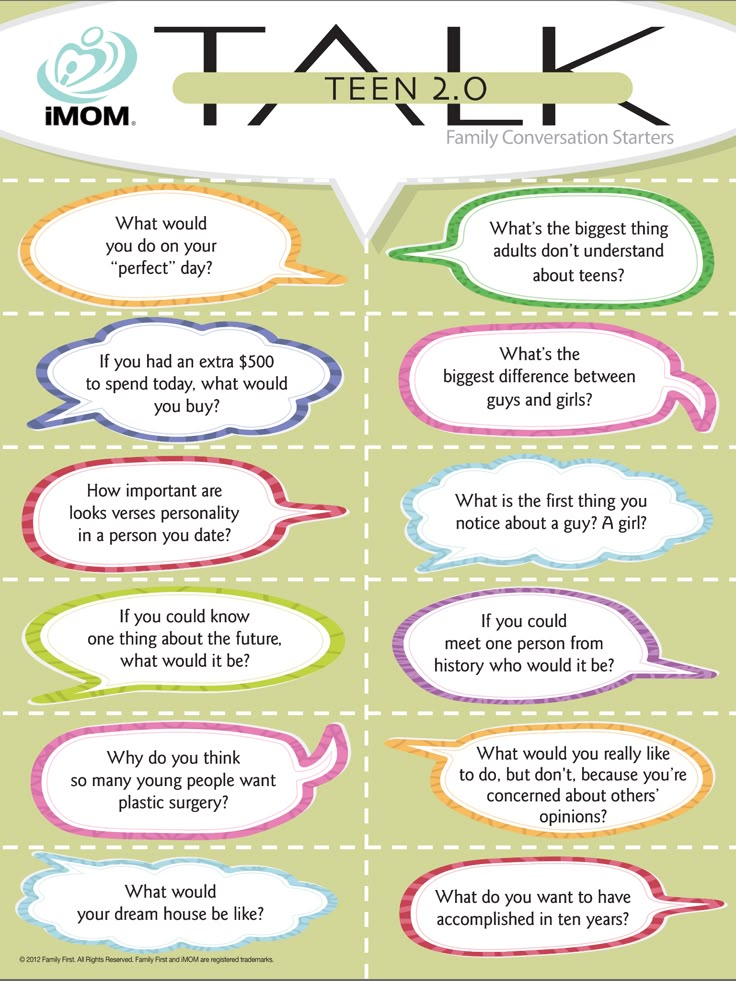Positive self talk exercises
Positive Self-Talk Exercises - 5 Effective Ways
Positive Self-Talk Exercises – 5 Effective Ways
Hi friends, today I am sharing an important article on Positive Self-Talk. We have seen many people including ourselves doing self-talk either while walking, or driving, or playing, or while doing any other work. Here I’ll take you through the benefits of positive Self-Talk along with 5 effective Positive Self-Talk Exercises.
Table of Contents
What is Self-Talk?
Self-talk is the dialogue we have with ourselves either mentally or out loud. Positive or negative, self-talk is the information and messages we send to ourselves in our every waking moment.
Self-talk often comes in different ways, but the common denominator is that at the end of the conversation, we are either motivated to keep pushing or give up and stop trying. The messages we send to ourselves – these self-talks – are instrumental to our success or failure in life. We either talk to ourselves so much that we motivate, push, or inspire ourselves to succeed or we tell ourselves all the things that would make us fearful and keep us from taking actionable steps.
So, our drive to achieve and reach all our goals depends on what we tell ourselves. The fact is, we will always talk to ourselves, what matters is whether we are doing so positively or negatively.
Negative and Positive Self-TalkThe act of self-talk is deeply rooted in human psychology and they are both the unconscious and conscious opinions we have of ourselves and the world around us. Sigmund Freud was the first person who led humans to the knowledge of unconscious and conscious stages of thoughts was a philosopher and psychologist. According to him, we have both stages and levels of thought and it is the unconscious part that has a lot of influence in our lives in more ways than we realize.
By practicing self-talk, we subconsciously examine our beliefs and thoughts, ask ourselves the fundamental questions that personally concern us, and evaluate our ideas. And this entire process can either be done negatively or positively.
There are generally two kinds of personalities – the optimists and the pessimists.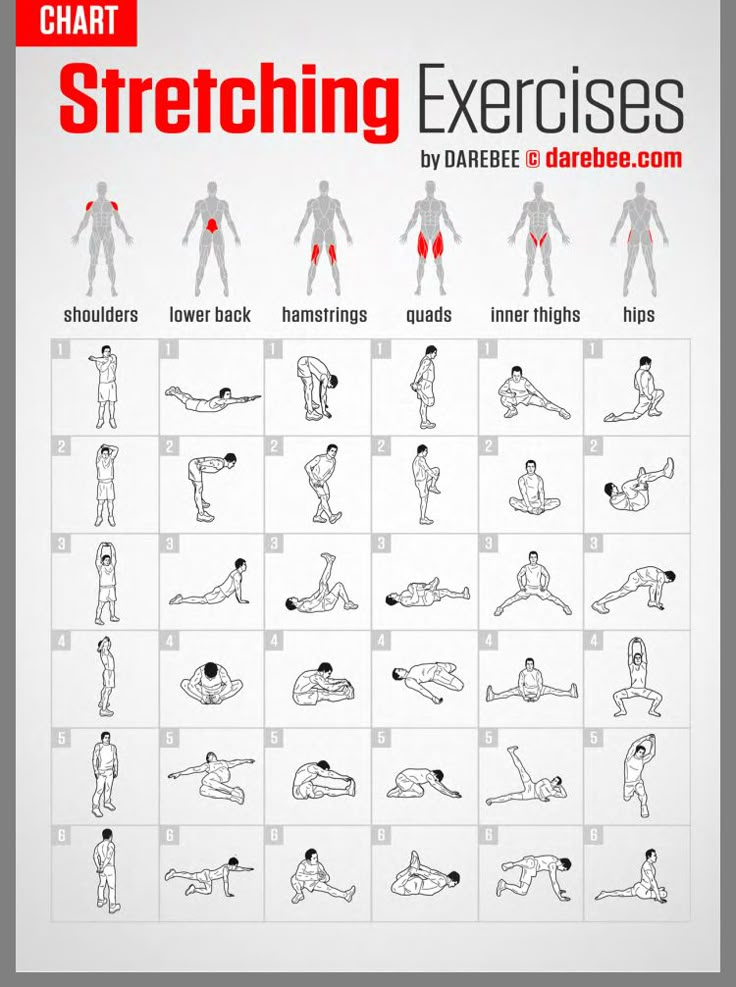 The optimists always maintain a positive attitude about themselves and life in general even when circumstances do not look good. Pessimists are the exact opposite. The optimists will almost always have positive self-talk because they have self-compassion and self-understanding of what they have been through, while pessimists will lean on the more negative thoughts and self-talk.
The optimists always maintain a positive attitude about themselves and life in general even when circumstances do not look good. Pessimists are the exact opposite. The optimists will almost always have positive self-talk because they have self-compassion and self-understanding of what they have been through, while pessimists will lean on the more negative thoughts and self-talk.
While these theories may hold facts, negative self-talk does not have to be the reality of a pessimist. If your thoughts are always negative, you will have to take active and intentional steps to shift the direction of your inner dialogue. This will help make you a more positive person which will, in turn, improve your quality of life.
The Power of Positive Self-TalkAs humans, we often find ourselves having conversations in our heads, and most times, these conversations are often very heated. Sometimes we find ourselves acting out a scenario and other times, we are giving ourselves much-needed advice or rebuke.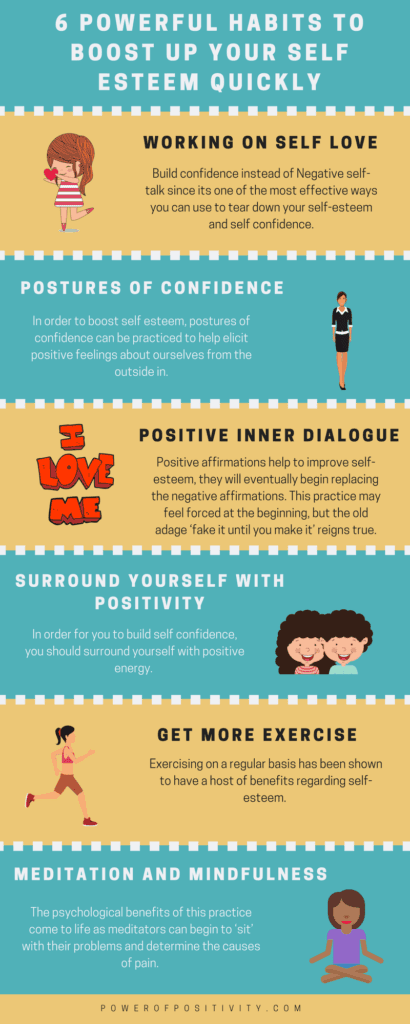 This is a normal occurrence and it is what is referred to as “Self-Talk”.
This is a normal occurrence and it is what is referred to as “Self-Talk”.
According to research carried out by Leung and Poon in 2001, positive self-talk can truly help those who have anxiety and depression. Since these disorders are known to be linked with negative self-talk, it goes to show that positive self-talk will have a huge effect in treating them.
Boosts Self-confidenceWhen you constantly say positive things about yourself to yourself, you will begin to believe it and then with time, you will have a huge confidence boost. When you tell yourself you’re capable of doing certain things, your confidence in those things increases.
Reduces StressIn 2004, researchers Iwanaga, Seiwa, and Yokoyama conducted research that showed that optimistic people tend to practice positive self-talk and use more reliable coping schemes when they are stressed or faced with challenges.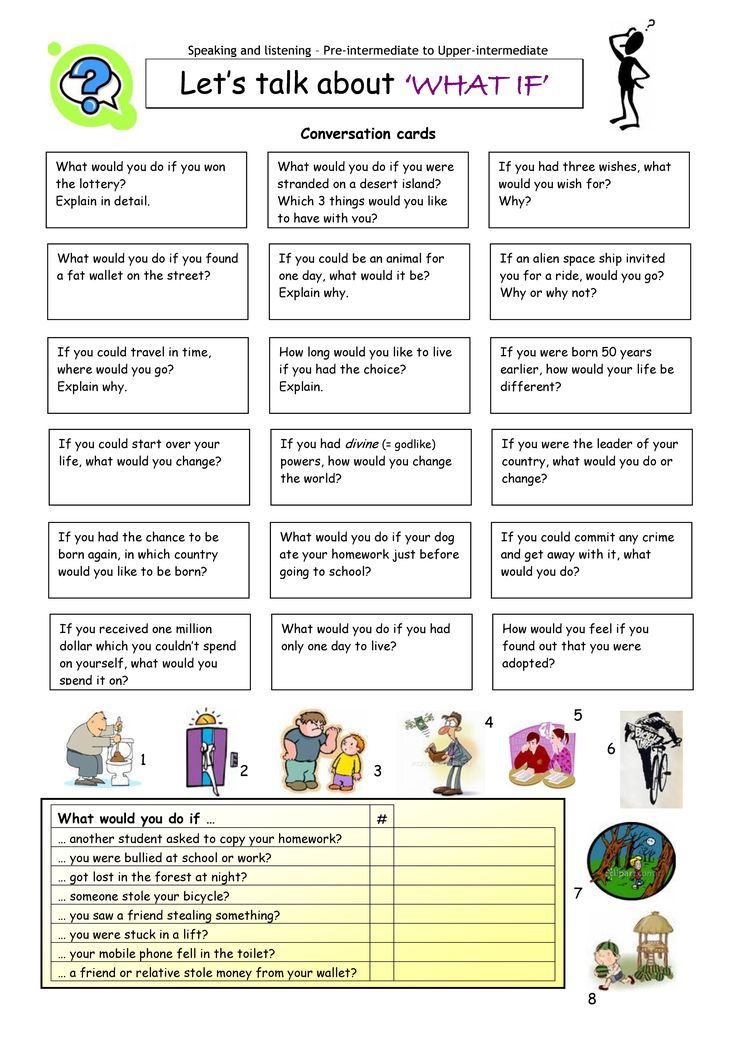
When you attack problems and challenges with an “I can do it” mindset, it opens you up to so many possibilities of ways to end those challenges or accept defeat with the knowledge that you gave it your best. This helps to reduce the level of stress that the situation will bring.
Positive Self-Talk help to Build Strong WillpowerThe habit of always speaking positively and kindly to yourself has a lot of advantages, and one of them is how it affects your willpower. Willpower is defined as a person’s ability to resist short-term pleasure with a long-term goal in mind.
We have plans for our future and things will always try to serve as a distraction. And when there’s no willpower, there’s no push to say “no” when required. Positive self-talk will help you encourage yourself to stick to the plan. According to a study that was published in the Journal of Personality and Social Psychology, positive self-talk can make a person build tolerance and have self-control. All you need to do is keep telling yourself you have what it takes to fight off all temptations and focus on your goals.
All you need to do is keep telling yourself you have what it takes to fight off all temptations and focus on your goals.
The first step to practicing self-talk is to first recognize how your negative thoughts take form/shape. Only then can you work on stopping them and effectively turning them into positive thoughts.
5 Effective Positive Self-Talk Exercises:
Surround Yourself with Positive PeopleThe kind of people you keep around you will have an effect on your life. If you only have people with negative energy, who only have bad days around you, their negativity will definitely rub off on you. The same is true for positive people.
Be GratefulAccording to a study by Psychology Today, young adults who were made to keep gratitude journals became more determined, attentive, and enthusiastic compared to those in other groups. If you want to spot all the positives in your life, find all the things you are grateful for and you’ll see how easy it will be to have positive self-talk.
You can keep a gratitude journal on which you can write down everything, both big and small, that you are most grateful for. The journal will help you focus on these positive things which will lead to positive self-talk.
Always Use Positive Words with OthersUsing negative words with others only points to the fact that you also use negative words on yourself. Only speak positive affirmations to those around you, and as your words uplift them, you, in turn, become enriched and positive-minded. Try to focus on the good things about your friends and loved ones and try not to always dwell on the bad.
Also, actively combat negative thoughts when they pop into your head. For instance, when you think negatively like “I will never get better at this” or “there’s no way this can work”, you can quickly catch yourself and think like this instead “I’ll give it another try and will keep trying till I get it right” and “I can try to think of new ways to make it work till it does”. It’s all in the attitude.
It’s all in the attitude.
Have a firm belief that you will succeed. Believe and trust in the skills and abilities you possess that will help you achieve success. Have no doubts and never stop telling yourself you can attain success. If it’s something a human can achieve, then you are equipped with all it takes to achieve it.
Use Positive AffirmationsSometimes, it gets a bit difficult to remember the things you want to tell yourself. The best way to fix that is by always keeping positive affirmations within your line of sight.
You can write little notes and affix them all around your house, office space, and even your car. Use positive affirmations as the wallpaper on your phone and computer. Seeing these affirmations will remind you to always talk kindly and positively to yourself.
The TakeawayOne thing you must realize is that talking to yourself is a very good thing.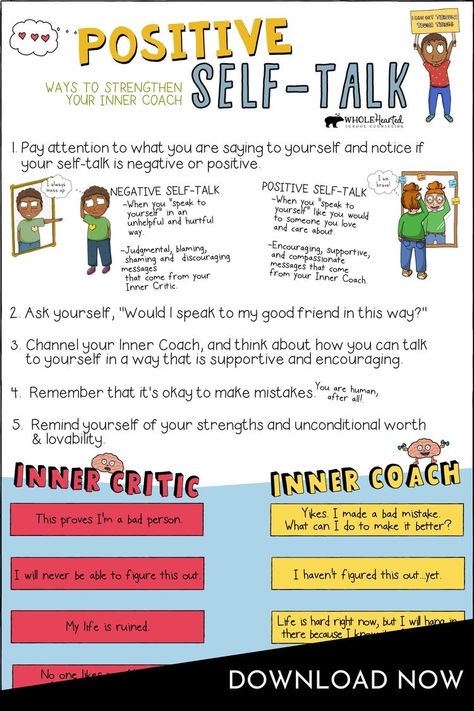 The fact is, no one can cheer you on to your dreams better than you can and no one can motivate you to achieve success in your field(s) as much as you.
The fact is, no one can cheer you on to your dreams better than you can and no one can motivate you to achieve success in your field(s) as much as you.
The power of positive self-talk is so enormous that it can be the thin line between living the life of success you see for yourself, and a life of fear, doubt, failure, and nonfulfillment. So, start practicing positive self-talk today and watch how everything will begin to take a turn for the better.
Stay Happy and Healthy!!!
Disclaimer: The content shared in this blog is based on some personal experiences, observations, and self-understanding through research. The details provided here are to share my thoughts with people, only for educational and informational purposes, and it is not a piece of expert professional advice to the reader. The details mentioned in this blog do not bind or compel any person to follow the methods given here. The intent to write and share this blog is to communicate some insights on the possible solutions and methods that can help people get motivated and encourage them to start using some of these methods to achieve positive results in life.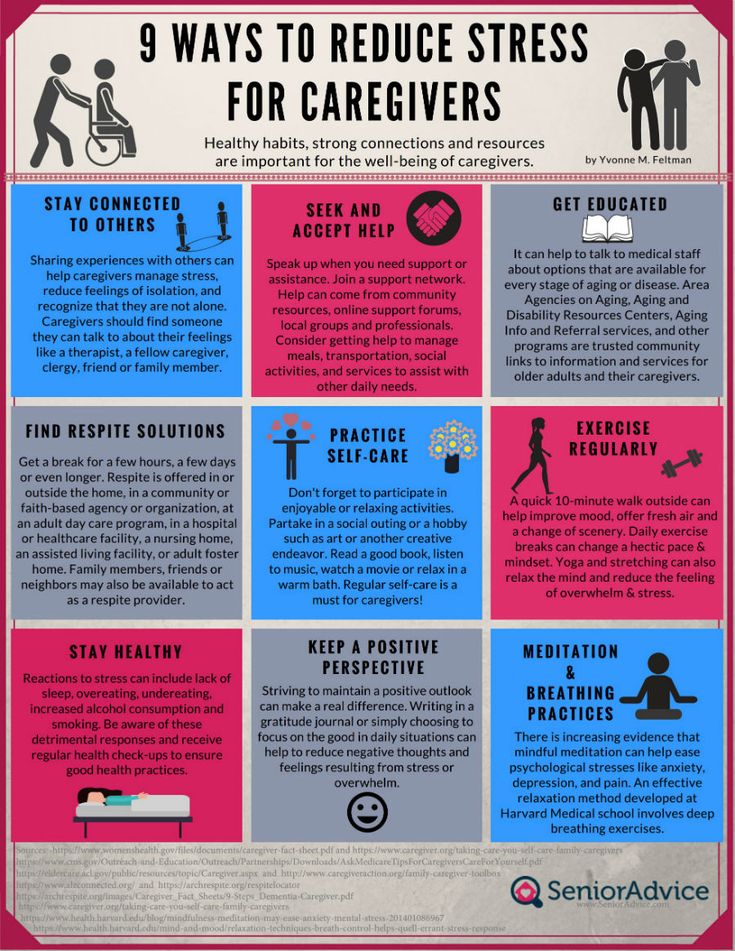
What is Positive Self-Talk? (Incl. Examples)
It’s not uncommon for most of us to keep a running dialogue inside our heads.
This dialogue can range from giving ourselves instructions while we carry out a task, random observations about our environment or a situation, or it could be what is often referred to as self-talk.
Self-talk is the internal narrative you hold about yourself. It’s your inner voice and you may or may not have spent much time thinking about it or giving it any attention. The truth is, our self-talk can actually have a much bigger influence on the way we see ourselves, and the world around us than we realize.
Before you read on, we thought you might like to download our 3 Self-Compassion Exercises for free. These detailed, science-based exercises will not only help you increase the compassion and kindness you show yourself but will also give you the tools to help your clients, students or employees show more compassion to themselves.
This Article Contains:
- A Look at the Psychology
- What Does the Research Say?
- The Importance and Benefits of Positive Self-Talk
- Is There any Evidence that Suggests it can Help with Anxiety and Depression?
- Can it Help Combat Stress?
- 10 Examples of Positive Self-Talk Statements and Phrases
- How to Use Positive Self-Talk: 4 Strategies and Techniques
- 3 Exercises and Activities for Adults
- 3 Positive Self-Talk Activities for Students
- A Positive Self-Talk Game
- 5 Positive Self-Talk Worksheets (incl. PDF)
- Does Using Positive Self-Talk Guarantee a Positive Outcome?
- 3 Books Worth Reading
- 3 TED Talk Videos
- 10 Quotes on the Topic
- A Take-Home Message
- References
A Look at the Psychology
Self-talk is generally thought to be a mix of conscious and unconscious beliefs and biases that we hold about ourselves and the world generally. It was Sigmund Freud who first created the idea that we have both conscious and unconscious levels of thought, with unconscious cognitive processes influencing our behavior in ways we don’t realize (Cherry, 2019).
It was Sigmund Freud who first created the idea that we have both conscious and unconscious levels of thought, with unconscious cognitive processes influencing our behavior in ways we don’t realize (Cherry, 2019).
Self-talk can be positive or negative – and paying attention to which you most often sway towards, can help you start making proactive changes about how you take on life’s challenges.
Negative Self-Talk
Our patterns of self-talk are all too often negative – we focus on preconceived ideas that we’re ‘not good enough’ or ‘always a failure’ or ‘can’t do anything right’. Our brains are hardwired to remember negative experiences over positive ones, so we recall the times we didn’t quite get it right more than the times we do. We then replay these messages in our minds, fuelling negative feelings (Jantz, 2016).
Positive Self-Talk
Positive self-talk, as you may have guessed, is the flip of negative self-talk. It’s not about narcissism, or deceiving ourselves into thinking things that are inaccurate. It’s more about showing yourself some self-compassion and understanding for who you are and what you’ve been through (Jantz, 2019).
It’s more about showing yourself some self-compassion and understanding for who you are and what you’ve been through (Jantz, 2019).
Positive self-talk sees our internal narrative switching to ideas like ‘I can do better next time’ or ‘I choose to learn from my mistakes, not be held back by them’.
What Does the Research Say?
In terms of how impactful positive self-talk can be, the research unanimously agrees it’s quite a lot. From sports professionals to losing weight, to combatting depression: changing the way you talk to yourself can have a proactive roll-on effect in behavior changes.
- Keizer, Smeets, and Dijkerman (2013) conducted a study where they asked patients with anorexia nervosa to walk through a doorway that became increasingly narrower. Participants with the disorder began to turn their bodies when the doorway was 40% wider than their shoulders, compared to participants who had no diagnosis, who only began to turn when the doorway was 25% wider than their shoulders.
 The researchers surmised that the negative self-talk the anorexic participants participated in had a dramatic effect on the way they viewed their bodies – making them believe they were larger than they actually were.
The researchers surmised that the negative self-talk the anorexic participants participated in had a dramatic effect on the way they viewed their bodies – making them believe they were larger than they actually were. - Conroy and Metzler (2004) explored the ways self-talk impacts cognitive anxiety in sports performance. They looked at state-specific self-talk, so the way athletes spoke to themselves while failing, while succeeding, while wishing for success, and while fearing failure. They measured these alongside expressions of situation-specific trait performance anxiety: fear of failure, fear of success and sport anxiety. They found the strongest results for self-talk associated with fear of failure and sports anxiety, essentially the athletes experienced higher anxiety when using negative self-talk.
- Similarly, Kendall and Treadwell (2007) also explored the ways self-talk effects anxiety. They investigated self-talk as a predictor for anxiety in children with and without a diagnosis of an anxiety disorder.
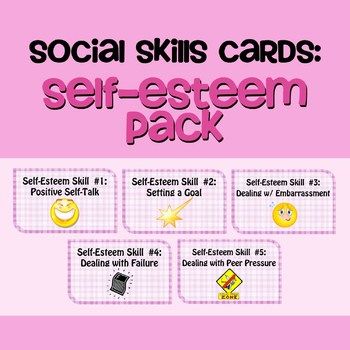 They found that reducing negative self-talk mediated substantial treatment gains in the children with a diagnosis.
They found that reducing negative self-talk mediated substantial treatment gains in the children with a diagnosis. - Wrisberg (1993) found that self-talk can help to improve learning performance, by assisting with the concept of ‘chunking’ complex information, which has been proven in aiding recall and carrying out complex tasks accurately.
- Chopra (2012) found that providing students with effective strategies to turn negative self-talk into positive self-talk enabled them to successfully transform their negative thought processes and the value of doing so in their lives.
- Todd, Oliver, and Harvey (2011) carried out a review of the literature and research surrounding self-talk and unanimously found that positive self-talk interventions are effective in mediating cognitive and behavioral change.
The Importance and Benefits of Positive Self-Talk
As the research suggests, positive self-talk is important for a number of reasons.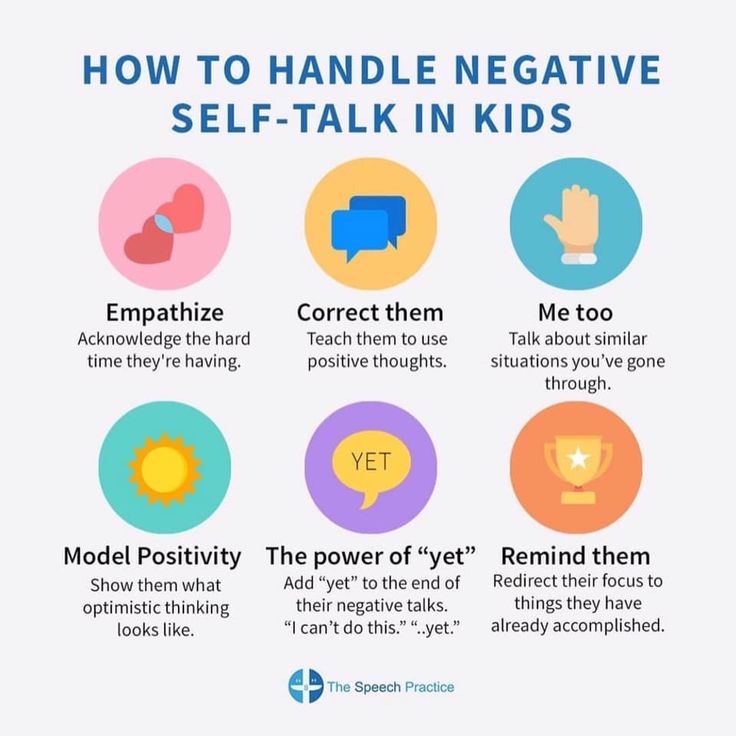
From helping to overcome body dysmorphia to sports performance, mediating anxiety and depression, to more effective learning: positive self-talk can make a world of difference.
Three additional benefits include:
1. Helps to Reduce Stress
Research has shown that people who are more inclined towards thinking optimistically, are also more inclined towards positive self-talk and utilize more active coping strategies when faced with stressful situations and challenges (Iwanaga, Yokoyama, and Seiwa, 2004).
Positive self-talk helps you reframe the way you look at stressful situations, understanding that you will approach challenges with the best of your ability and that whatever the outcome – you did the best you could. Tackling these situations with an ‘I can do this’ mindset rather than a negative ‘This is too hard’ one, opens up new ways of thinking and problem-solving.
2. Helps to Boost Confidence and Resilience
Approaching life with a positive self-talk approach can help to boost your self-confidence.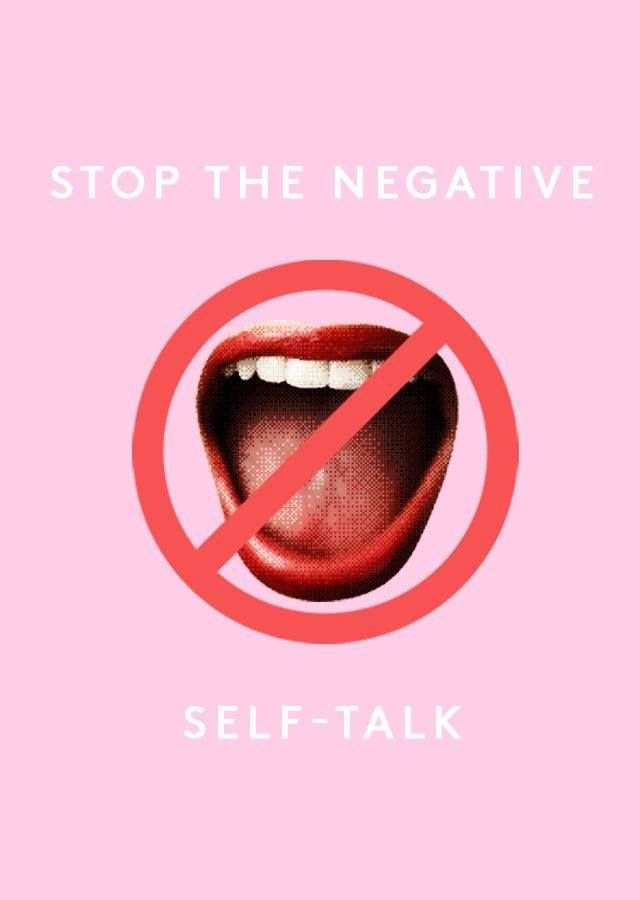 Individuals who score highly for optimism and positive self-esteem are more likely to achieve their goals, score good grades and recover quickly from surgery (Lyubormisky, 2008).
Individuals who score highly for optimism and positive self-esteem are more likely to achieve their goals, score good grades and recover quickly from surgery (Lyubormisky, 2008).
Regular positive self-talk can help you to feel more confident in the face of achieving your goals, as you instill yourself with the belief that the things you want are achievable, and when problems do arise, you find workarounds.
3. Helps Build Better Relationships
You’re probably aware of what it feels like to be around someone who is positive, self-assured and content in who they are as a person. They exude confidence, and it reflects positively on those around them. Assad, Donnellan, and Conger (2012) found that couples who were more optimistic cited higher levels of cooperation and positive outcomes.
People who utilize positive self-talk are also extremely capable of picking up on the positive traits of those around them.
Is There any Evidence that Suggests it can Help with Anxiety and Depression?
The research seems to support the idea that positive self-talk can indeed help with disorders like anxiety and depression. This is mainly because negative self-talk has been widely linked with disorders such as depression, anxiety, low self-esteem, aggression, and post-traumatic stress disorder (Leung and Poon, 2001, Owens and Chard, 2001).
This is mainly because negative self-talk has been widely linked with disorders such as depression, anxiety, low self-esteem, aggression, and post-traumatic stress disorder (Leung and Poon, 2001, Owens and Chard, 2001).
Flipping self-talk to positive has also been shown to mediate some really great results with young people diagnosed with an anxiety disorder (Kendall and Treadwell, 2007).
What this tells us is that positive self-talk can help to overcome these disorders, by correcting the bias towards negative thoughts and beliefs we might hold about ourselves.
Can it Help Combat Stress?
In a nutshell, yes. As touched on briefly, one of the benefits of positive self-talk is that it can help you approach challenges and stressful situations with a more open and optimistic mindset (Iwanaga, Yokoyama, and Seiwa, 2004).
Positive self-talk isn’t about knowing all the answers or thinking you’re amazing, it’s simply about reframing how you view things, removing negative bias, and approaching life with the idea that you can tackle things – and even if it doesn’t go perfectly – you’ll learn from it for next time.
10 Examples of Positive Self-Talk Statements and Phrases
If positive self-talk seems like foreign territory to you, it might be difficult to know where to begin in terms of effective positive statements and phrases to try.
It’s important to know that not everyone’s positive self-talk will be the same, and you should try a few different approaches to find the ones that ultimately work for you.
Here are ten just to get you started:
- I have the power to change my mind.
- Attempting to do this took courage and I am proud of myself for trying.
- Even though it wasn’t the outcome I hoped for, I learned a lot about myself.
- I might still have a way to go, but I am proud of how far I have already come.
- I am capable and strong, I can get through this.
- Tomorrow is a chance to try again, with the lessons learned from today.
- I will give it my all to make this work.
- I can’t control what other people think, say or do.
 I can only control me.
I can only control me. - This is an opportunity for me to try something new.
- I can learn from this situation and grow as a person.
How to Use Positive Self-Talk: 4 Strategies and Techniques
Before you can begin to use positive self-talk, you first need to identify how often and what type of negative thinking/self-talk you engage in. Once you understand this, you can make a start on retraining your thoughts.
Negative self-talk tends to fall into one of four categories:
- Personalizing – Meaning you blame yourself when things go wrong.
- Polarizing – Meaning you see things only as good or bad, no gray areas or room for middle ground.
- Magnifying – Meaning you only focus on the bad or negative in every scenario and dismiss anything good or positive.
- Catastrophizing – Meaning you always expect the worst.
You might identify with only one of these categories or multiple.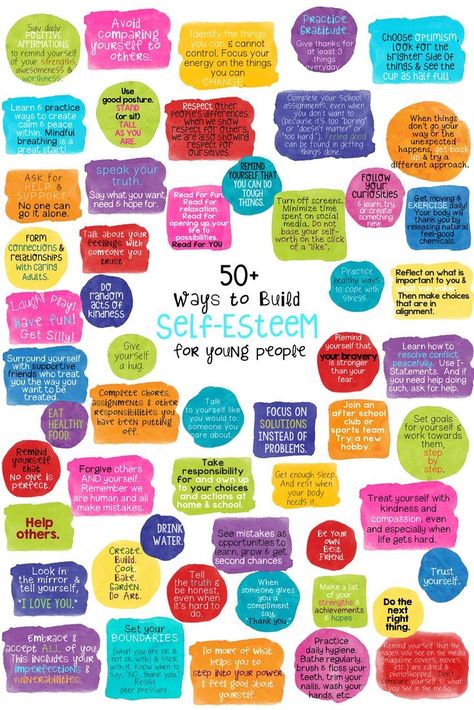 The point is once you start categorizing your thoughts like this, you can then begin to work on switching them for more positive frames.
The point is once you start categorizing your thoughts like this, you can then begin to work on switching them for more positive frames.
This won’t happen overnight, and you’ll need to ensure you put in the practice to really hone in on your self-talk and identify where changes are needed.
Some strategies you might use to achieve this could include:
1. Identifying Self-Talk Traps
Some situations may cause us to indulge in more negative self-talk than others. For example, an introvert might find negative self-talk crops up when they have to attend social events or networking.
Identifying these traps can help you put in more preparation to address and switch your negative to positive self-talk.
2. Utilize Positive Affirmations
Positive affirmations are a great way to switch up our self-talk chatter. Before a situation even arises that might incite negative self-talk, practice saying positive affirmations in the mirror to encourage your positive approach to yourself.
Visual cues are also excellent reminders to adopt a more positive approach. Little notes, posters or post-its around the house with positive expressions can make a huge difference to your daily mindset.
3. Check-In With Your Emotions Regularly
Switching to positive self-talk takes effort. We’re so attuned to negative self-talk that it might only take one or two minor setbacks to put you back down that path.
When challenges do arise, make sure you check in with how you’re feeling and that your self-talk hasn’t gotten negative. Bring it back with some positive phrases.
4. Don’t Be Afraid to Create Boundaries
Sometimes there are people in our lives who don’t bring out the best in us. Identifying self-talk traps might also mean identifying a person or two who encourages you to think negatively about yourself. It’s okay to create boundaries and remove these people.
Focus on surrounding yourself with people who talk positively about you, and encourage you to do the same.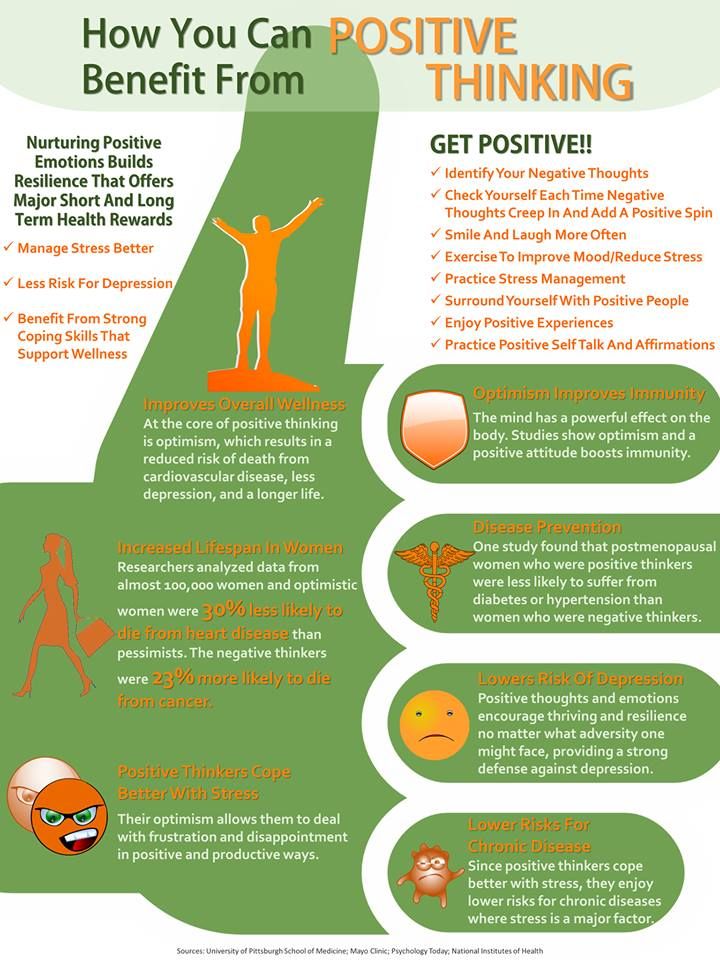
3 Exercises and Activities for Adults
Once you have a better understanding of how prominent your negative self-talk might be, and the categories you use when indulging in self-talk, you can spend some more time working on developing your positive self-talk instead.
The below exercises are great for personal and individual use, or if you’re coaching a client or small group to practice their positive self-talk:
1. Listen, Learn and Think it Through Exercise
Step One: Listen
Keep a diary for a few days to a week and take it with you everywhere you go. Pay close attention to your self-talk and make a note of:
- Is it mostly positive or negative?
- What events, people or scenarios encourage positive versus negative self-talk?
- What would a friend or loved one say if they knew you talked to yourself in this way?
- Are there any common threads in your self-talk?
Step Two: Learn
At the end of the week, reflect on what you have written.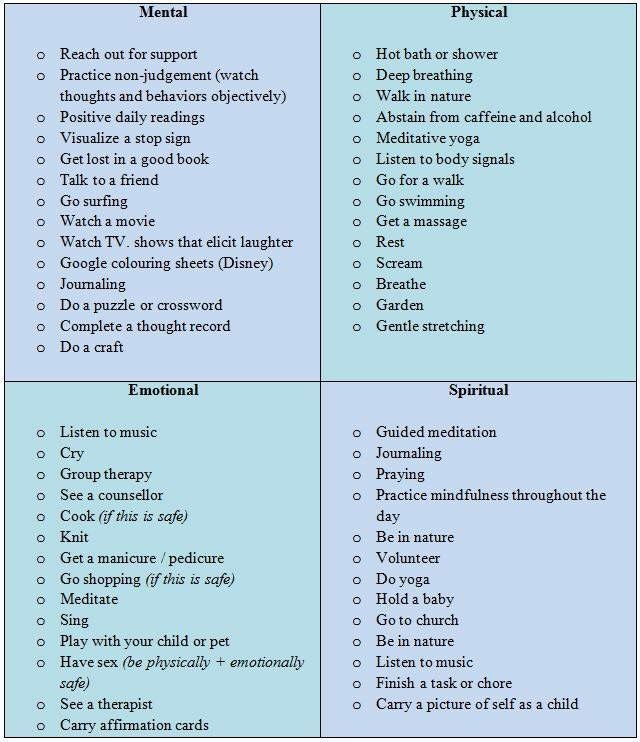 Think about the following questions:
Think about the following questions:
- What thoughts come up most often?
- Why do they come up?
- How would you feel about yourself if you switched negative self-talk for positive?
- How did negative self-talk hold you back from achieving your goals?
- What might you achieve if you practiced more positive self-talk?
Step Three: Think it Through
To really move negative to positive self-talk, you need to think over why you had the thoughts in the first place and answer honestly about how true these thoughts are. A few questions to use for this final part of the exercise:
- How big of a deal is this really? Might I be overreacting?
- Are my thoughts and conclusions based on facts or opinions? Whose opinions?
- Am I guessing at information and making assumptions?
- How accurate is this thought really?
2. Time to Switch Gears Exercise
This is a great follow on exercise from Listen, Learn and Think it Through. Now that you know where your negative self-talk might be holding you back, and when it arises, you can look to ‘switch gears’ about how you talk to yourself.
Now that you know where your negative self-talk might be holding you back, and when it arises, you can look to ‘switch gears’ about how you talk to yourself.
This exercise involves taking the negative self-talk you use and reframing it with a positive self-talk alternative.
For example:
Negative Self-Talk: ‘I am such an idiot! I screwed up that project and there’s no coming back from that.’
Switch to
Positive Self-Talk: ‘I didn’t do as well as I know I can but that’s okay. Now I know what I can do next time to be better, and that will help my personal and professional growth.’
Negative Self-Talk: ‘This deadline is impossible, I’ll never be able to get the work done.’
Switch to
Positive Self-Talk: ‘This is a lot to accomplish, and I can only do what I can do. As long as I keep my colleagues/boss informed, I’m sure we can make this work.’
Negative Self-Talk: ‘What’s the point in going, everyone will see what an imposter I am.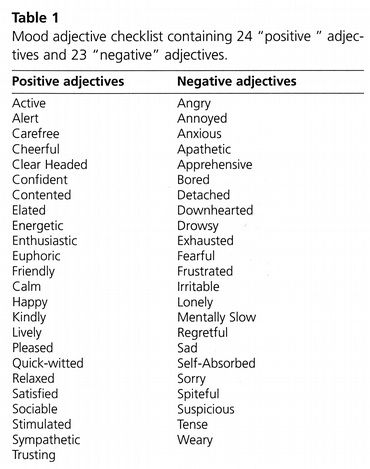 ’
’
Switch to
Positive Self-Talk: ‘Meeting new people can be daunting but I’m a good person, with lots to offer.’
Keep practicing and rehearsing how you switch up your negative self-talk and over time you’ll find that positive self-talk begins to come more naturally to you.
3. How Accurate is This Exercise
When stuck in a cycle of negative self-talk, it can feel impossible to stop and consider the origin. It’s often a long-ingrained assumption we’ve embedded and taken on as part of our identity.
To help challenge the assumption and make the switch to positive self-talk, it’s important to stop and ask the question:
How accurate is this belief?
When negative self-talk arises, try to follow these steps and ask yourself:
- Where does this belief come from?
- Is the information this belief is based on fact or opinion?
- Why do I believe this?
- How accurate is it?
Next, reflect and list all the times, situations and examples you can think of that go against the negative belief or self-talk statement you have.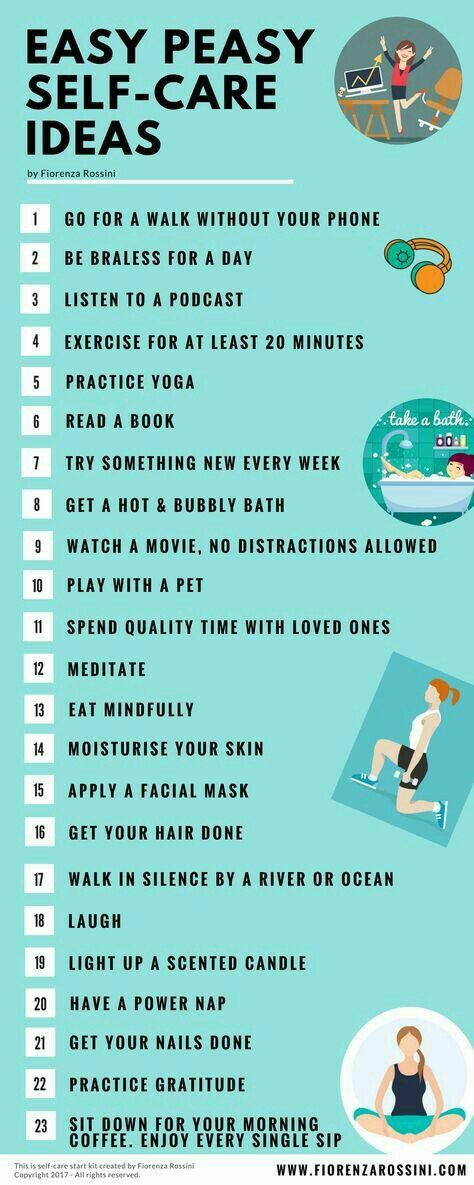 Write down:
Write down:
- Every time someone thanked you for your help or good work
- Every time you’ve felt good or confident about yourself – what was the situation?
- Every time you’ve been successful, no matter how small.
This process will help you build a more accurate and balanced profile of who you really are. This isn’t about creating a biased profile of how amazing you are, simply more realistic – accepting at times you might have failed or got it wrong, but you’ve also got it right too.
3 Positive Self-Talk Activities for Students
Working with students to increase their positive self-talk is a great opportunity to set them up with strong resilience and a mindset that sees them persisting in achieving their goals. Below are three exercises that are simple and easy to do with students, either individually or with groups.
1. Positive Affirmations Mood Board Activity
Visual cues for positive self-talk can be a great way to help encourage young people to incorporate them more into their everyday life.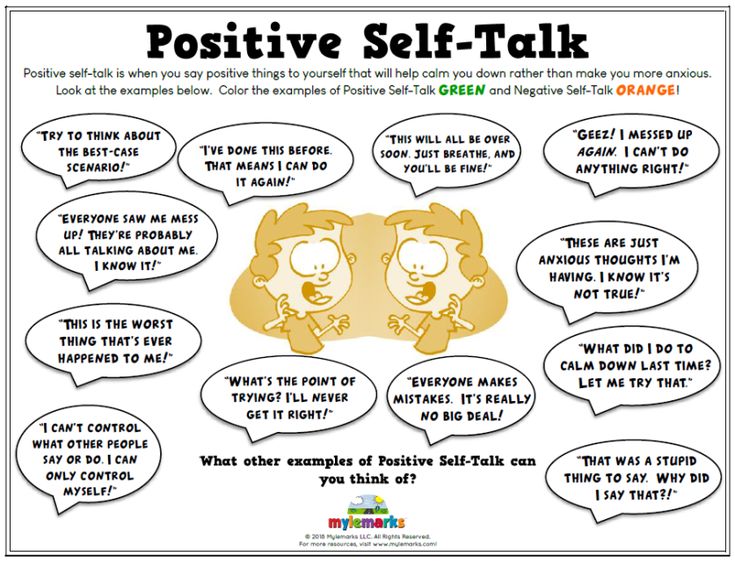 A mood board is a great visual representation to remind young people of the positive affirmations and self-talk they should use.
A mood board is a great visual representation to remind young people of the positive affirmations and self-talk they should use.
You will need:
- Selection of old magazines, newspapers or books that can be cut up
- Selection of pens and pencils
- Scissors and glue
- Pinboards or old cardboard for sticking affirmations to
Step One
Ask students to go through the selection of magazines to pick out keywords, phrases or pictures that they feel best to represent positive emotions, experiences, and goals they have. Ask them to focus on the words that create these feelings.
Step Two
Using either the boards or cardboard, students can stick or pin their chosen words and photos in a style that suits them – use different pens too and ask them to get creative with something that speaks to them and makes them feel good.
Step Three
Once complete, students can keep the boards in a visual place in the home as a daily reminder. You could even ask them to pick three positive affirmations they like to repeat daily in front of their boards, to help inspire positive self-talk.
You could even ask them to pick three positive affirmations they like to repeat daily in front of their boards, to help inspire positive self-talk.
2. The Imaginary Best Friend Activity
This activity has a very simple premise. It encourages young people to think more deeply about the negative self-talk they engage in, and whether they would use it when referring to a friend, or if a friend would use it to refer to them.
Step One
You can use the Listen, Learn, Think it Through exercise to help students to begin to identify when they use negative self-talk, and what phrases/words they use to talk about themselves.
Step Two
Once they have their list, ask them to reflect on each negative self-talk phrase and ask the following questions:
- Would a friend say or think this about me?
- Would I say or think this about a friend?
- What would a friend say about me instead?
- What would I say to a friend who thought this about themselves?
The answers to these questions can formulate some new positive self-talk phrases.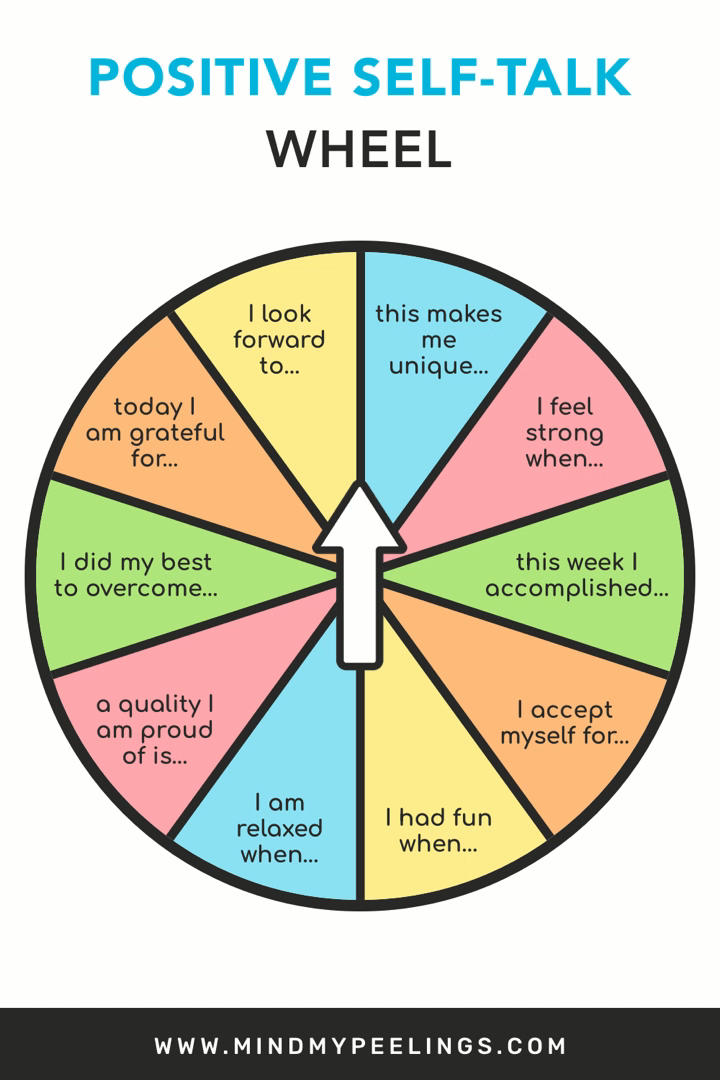
Step Three
Ask students to keep these phrases written down, either on their phone or in a notebook, that they keep with them. When they start to use negative self-talk, remind them to refer to this exercise and the positive self-talk phrases they created instead.
3. Identifying Positive versus Negative Self Talk Activity
For younger students, it’s important to help them become familiar with what negative versus positive self-talk looks like. A simple card activity can help to begin identifying this, as well as giving them the resources to incorporate more positive self-talk.
You will need:
- Colored paper or card cut into squares or a variety of shapes
- Colored pens
Step One
Create some fun shapes or stick to squares and cut up the colored card or paper – aim for at least 10-15 pieces for each set of phrases (so 10 for negative phrases and 10 for positive phrases). On each piece, write out your chosen phrases.
Step Two
Mix up all the phrases together and then sit down with your student/s. Ask them to work through the cards and create two piles – one for negative self-talk and one for positive self-talk. Encourage them to reflect on each one as they go. Discussion points could include:
- Do you ever use this phrase?
- Why do you think this is positive/negative?
- If this phrase is positive, what would the negative sound like (and vice versa)?
You could even ask them to create a third pile of cards for the phrases they are unsure of, and again encourage some discussion around this at the end to encourage their thinking.
A Positive Self-Talk Game
Using games, especially with young people, can be a great way to help get them engaged in the concept of positive self-talk.
A popular game is Negative Ned versus Positive Pat, which can be adapted for use with young people, teenagers, and adults. Here’s what it involves:
Here’s what it involves:
Number of players:
Minimum of 2, maximum of six, for ages 5 and up.
Game Materials Provided:
- Two sets of game cards (One set Negative Ned and one set Positive Pat)
- One set of scenario cards
- Two tubes
Game Materials Needed:
- Colored paper or card
- Scissors and sellotape or glue
How to Play:
- Cut out the phrases and glue them to the card. Shuffle the scenario cards and then shuffle the Negative Ned/Positive Pat cards together separately to create two piles of shuffled cards.
- Decide who goes first and ask them to turn over one card from each deck – so one from the scenario deck and one from the Negative Ned/Positive Pat deck. The player reads out the scenario and depending on whether they have turned a Ned or Pat card will need to:
- Provide an example of the self-talk that the card represents (negative or positive).

- Explain how this type of self-talk would make them feel and respond to the scenario.
- Then they must place the Ned or Pat card in the corresponding tube (so there should be a tube or place card on the table that represents Ned and Pat.
- Continue around the group of players in this fashion.
- Provide an example of the self-talk that the card represents (negative or positive).
- In the Ned/Pat deck will also be ‘Pick a tube’ cards. If a player turns this card, they will need to pick a tube of accumulated cards, and depending on which they pick they must:
- Describe the benefit of using positive self-talk.
- Describe a consequence of using negative self-talk.
- The player then keeps the cards from the tube they selected.
- The game continues until all of the Ned/Pat cards have been gone through.
- The winner is the player who has accumulated the most Ned or Pat cards at the end.
You can download a PDF of the game instructions, including printouts of the card decks needed.
5 Positive Self-Talk Worksheets (incl.
 PDF)
PDF)Worksheets are a fantastic resource if you’re in the process of coaching someone, or working with groups of students, to better understand how to utilize positive self-talk. Below are three excellent ones I came across in my research:
1. Self-Esteem Journal Worksheet
Positive self-talk has been linked with higher self-esteem. Journalling is a fantastic way to focus more on the positives in your everyday and life overall, but many people aren’t familiar with this as a resource for helping inspire behavioral changes.
This worksheet is a fantastic tool for those who are new to journaling and want to make sure they find the real value in doing it. It incorporates five tables of prompts to encourage you to think positively about different aspects of your day. These prompts include:
Table One:
- I felt proud of myself today when I …
- Today, I enjoyed …
Table Two:
- My family admires me for my …
- The highlight of my day was …
Table Three:
- 3 unique things about me are …
- One of my best attributes is …
Table Four:
- I am excited about …
- I am in my element when I …
Table Five:
- My biggest success this week was …
- 5 ways my life is awesome …
You can download the Self-Esteem Journal worksheet with all the table prompts.
2. Making it Happen Worksheet
This worksheet breaks down different situations and asks the participant to respond with an example of negative self-talk versus an example of positive self-talk. For example:
| Situation | Negative Self-Talk | Positive Self-Talk |
|---|---|---|
| Having to speak to someone new | They’ll think I’m weird and they won’t want to talk to me. | I’m interesting and this person seems interesting too. Maybe I’ll make a new friend. |
The worksheet has a list of pre-filled situations for participants to respond to, as well as space for writing in new situations that might be more specific and relevant to the individual or group that the worksheet is used with.
You can download this worksheet, together with the next three, from the Australian Government Department of Education Skills and Employment (DESE) website.
3. Nothing Ventured, Nothing Gained Worksheet
This worksheet focuses more on the idea that when we use too much negative self-talk, we actually hold ourselves back from reaching for and achieving our goals. It can also prevent us from trying new things and allowing ourselves to undertake the activities we think we might enjoy.
It can also prevent us from trying new things and allowing ourselves to undertake the activities we think we might enjoy.
Here’s what the worksheet includes:
First, there is a set of warm-up statements to get participants thinking about what the ‘worst-case scenario’ might be if they tried something new. These include things like:
- Learning pottery
- Reading out loud
- Trying a new hairstyle
- Introducing yourself to a new person
It then asks participants to reflect on what the best-case scenario could be if they tried this situation (which ultimately creates a new positive self-talk phrase).
The worksheet then includes some space for participants to write out their own individual scenarios or situations they may have been avoiding due to self-talk, and to repeat the worst-case versus best case thinking.
See page three of the PDF to view the worksheet.
4. The Inner Voice
This handout provides a simple explanation as to how our inner voice dictates much of our success and ability to learn.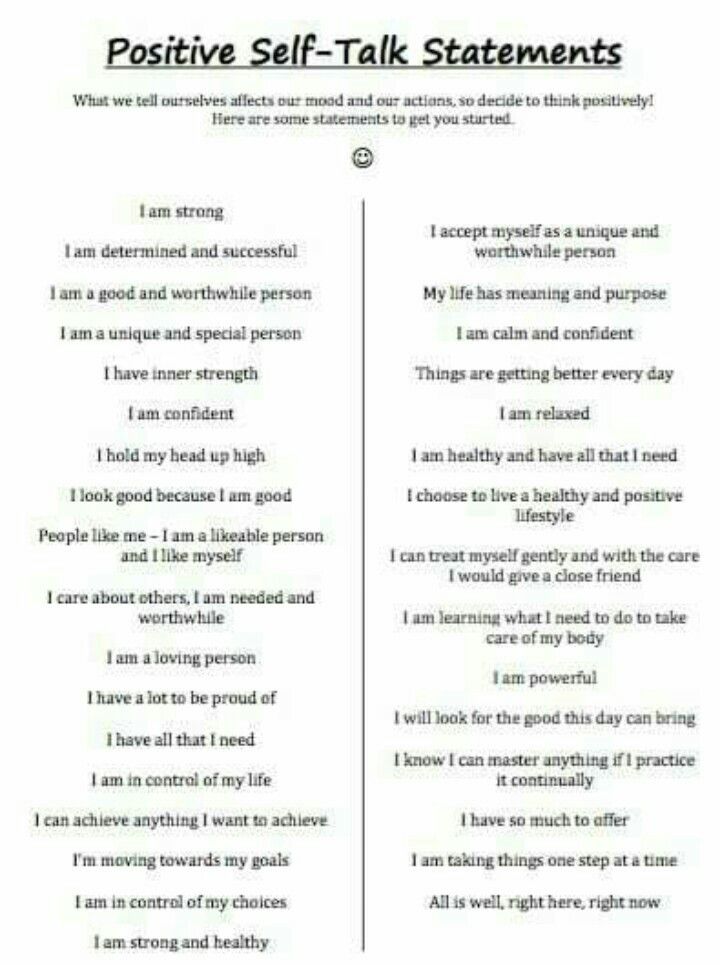
In particular, by programming our inner voice to speak to us positively, we can become more effective at mastering our environments and weathering storms that may arise as we go about our day-to-day lives.
Better yet, by shaping our inner voice into our ally, we can get one step closer to becoming an ideal version of ourselves.
See page five of the PDF to view the worksheet.
5. Being a ‘Yes’ Person
This worksheet illustrates the difference between various forms of self-talk as it dictates our intentions to take action.
For instance, in a situation where a person has a task to complete, their inner self-talk may take one of three forms:
| Yes | No | I don’t know |
|---|---|---|
| Sounds good. I’ll give it a go. | I’m hopeless. This is impossible. I’m not even going to try! | I don’t know about that. Maybe I’ll wait and see. |
By practicing saying ‘yes’ more often and being open to new possibilities, we can see problems as learning opportunities, retrain our minds, and program our inner voices for better living.
See page six of the PDF to view the worksheet.
Does Using Positive Self-Talk Guarantee a Positive Outcome?
While positive self-talk has definitely been linked to greater self-esteem, confidence, and resilience, research has yet to find a concrete link between positive self-talk and positive outcomes.
In their review of the research, Todd, Oliver, and Harvey (2011) found that positive self-talk has another component to it – motivational self-talk. This type of self-talk focuses more on preparing oneself to tackle challenges, and was commonly cited as a form of self-talk for athletes before a game or event.
Although they did find from their review that positive self-talk does help to inspire positive cognitive and behavioral changes, they couldn’t find any concrete evidence that negative self-talk led to negative outcomes too. So, it seems positive self-talk is definitely beneficial, but consistency and motivation could also be two key components for positive outcomes.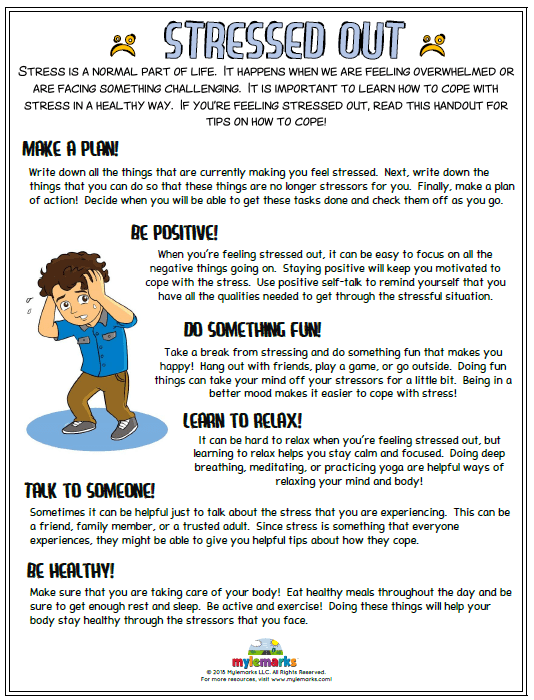
3 Books Worth reading
If after finishing this article you feel inspired to pursue some more resources and literature, I’ve listed some of the best books and videos I’ve found to help you on your way:
1.
It’s The Way You Say It – Carol FlemingThis book recognizes the importance of what you say for your own personal ideas about yourself, and for influencing those around us. The trouble is, most people aren’t aware of how they say things and how to change this.
Described as a ‘nuts and bolts’ guide to becoming more aware of your communication – for the self and others – this is a great book for exploring the concepts of self-talk.
Available from Amazon.
2.
What to Say When You Talk to Your Self – Shad HelmstetterThis internationally popular book will help you further explore how what you say to yourself matters, and how deeply it impacts your behavior.
Helmstetter breaks down what he refers to as the Five Levels of Self-Talk (Negative Acceptance, Recognition and Need to Change, Decision to Change, The Better You and Universal Affirmation) and guides you through how to work through them for profound changes in your life.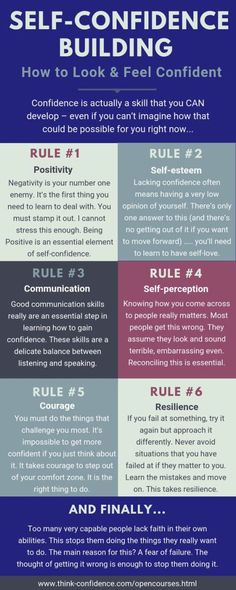
Available from Amazon.
3.
Become Your #1 Fan: How to Silence Your Inner Critic and Live the Life of Your Dreams – Kathryn OrfordThis book promises to be the ultimate guide in helping you combat your inner critic and repetitive self-talk, and how to use positive self-talk to aid you in achieving the life you really want.
It includes a selection of tools and exercises to help you do this.
Available from Amazon.
3 TED Talk Videos
Brené Brown is a leader in this field, and we share video from her as well as two other important TED talks.
Brené Brown – Listening to shame
Guy Winch – Why We All Need to Practice Emotional First Aid
Michael Shermer – The Pattern Behind Self-Deception
10 Quotes on the Topic
Loving or hating the life you are living is solely all in your repeated self-talk.
Edward Mbiaka
Turn down the volume of your negative inner voice and create a nurturing inner voice to take its place. When you make a mistake, forgive yourself, learn from it, and move on instead of obsessing about it.
Equally important, don’t allow anyone else to dwell on your mistakes or shortcomings or to expect perfection from you.
Beverly Engel
Positive self-talk is to emotional pain as pain pill is to physical pain.
Edmond Mbiaka
The way you choose to think and speak about yourself (to yourself and others), IS A CHOICE! You may have spent your whole life talking about yourself in a negative way, but that doesn’t mean you have to continue that path.
Miya Yamanouchi
Watch what you tell yourself, you’re likely to believe it.
Russ Kyle
If you hear a voice within you say ‘you cannot paint,’ then by all means paint, and that voice will be silenced.
Vincent Van Gogh
Talk to yourself like you would to someone you love.
Brene Brown
You cannot be lonely if you like the person you’re alone with.

Wayne Dyer
Be careful what you say about yourself because someone very important is listening. YOU.
John Assaraf
The more man meditates upon good thoughts, the better his world will be, and the better the world at large.
Confucius
A Take-Home Message
I hope you’ve enjoyed reading about the importance and benefits of positive self-talk as much as I’ve enjoyed researching it.
If there’s one thing I want you to take away from this article, it’s empathy and understanding that switching from pervasive negative self-talk to positive self-talk takes time. You might need to spend weeks or months working consistently and mindfully to correct the negative ways you think about yourself – and that’s totally fine.
Keep in mind all the positives that switching your thinking can bring, and keep that as your goal.
We hope you found this article interesting. Don’t forget to download our 3 Self Compassion Exercises for free.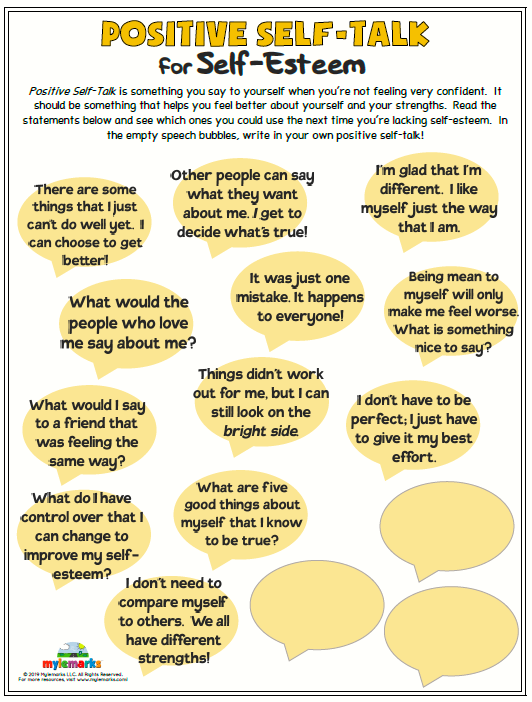
- Assad, K, Donnellan, M. B., and Conger, R. D. (2012). Optimism: an enduring resource for romantic relationships. Retrieved from: https://www.ncbi.nlm.nih.gov/pubmed/17645400
- Cherry, K. (2018). The Life, Work, and Theories of Sigmund Freud. Retrieved from: https://www.verywellmind.com/sigmund-freud-his-life-work-and-theories-2795860
- Chopra, K. (2012). Impact of positive self-talk. Retrieved from: https://opus.uleth.ca/handle/10133/3202
- Conroy, D. E. and Metzler, J. N. (2004). Patterns of Self-Talk Associated with Different Forms of Competitive Anxiety. Retrieved from: https://journals.humankinetics.com/view/journals/jsep/26/1/article-p69.xml
- Iwanaga, M., Yokoyama, H., and Seiwa, H. (2004). Coping availability and stress reduction for optimistic and pessimistic individuals. Retrieved from: https://www.sciencedirect.com/science/article/abs/pii/S0191886903000473
- Jantz, G. L. (2016). The Power of Positive Self-Talk. Retrieved from: https://www.
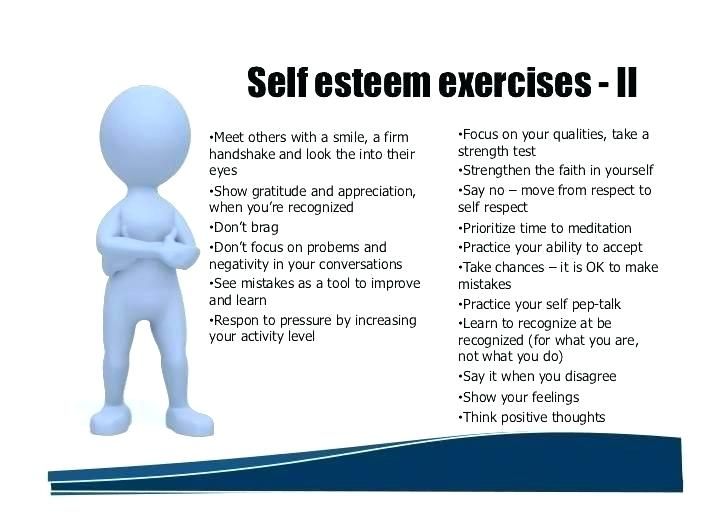 psychologytoday.com/us/blog/hope-relationships/201605/the-power-positive-self-talk
psychologytoday.com/us/blog/hope-relationships/201605/the-power-positive-self-talk - Kendall, P. C., and Treadwell, K. R. (2007). The role of self-statements as a mediator in treatment for youth with anxiety disorders. Retrieved from: https://www.ncbi.nlm.nih.gov/pubmed/17563155
- Keizer, A., Smeets, M. A.M., and Dijkerman, H. C. (2013). Too Fat to Fit Through the Door: First Evidence for Disturbed Body-Scaled Action in Anorexia Nervosaduring Locomotion. PLoS One. 2013.
- Leung, P. W., and Poon, M. W. (2001). Dysfunctional schemas and cognitive distortions in psychopathology: a test of the specificity hypothesis. Retrieved from: https://www.ncbi.nlm.nih.gov/pubmed/11583248
- Lyubormisky, S. (2008). How Much Confidence and Optimism Is Good For World Leaders and How Much Is Too Much? Retrieved from: https://www.psychologytoday.com/us/blog/how-happiness/200806/how-much-confidence-and-optimism-is-good-world-leaders-and-how-much-is-too
- Owens, G. P., and Chard, K.
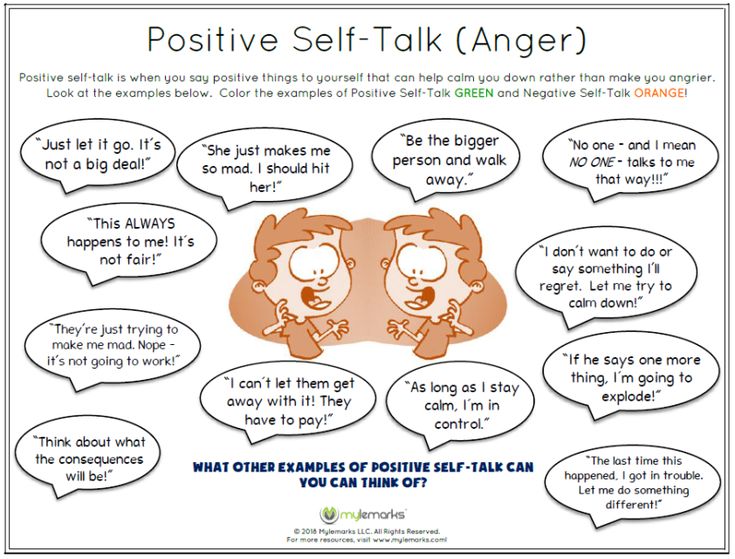 M. (2001). Cognitive distortions among women reporting childhood sexual abuse. Retrieved from: https://psycnet.apa.org/record/2001-14164-006
M. (2001). Cognitive distortions among women reporting childhood sexual abuse. Retrieved from: https://psycnet.apa.org/record/2001-14164-006 - Tod, D., Oliver, E. J., and Hardy, J. (2011). Effects of Self Talk: A systematic review. Retrieved from: https://www.researchgate.net/publication/51704153_Effects_of_Self-Talk_A_Systematic_Review
- Wrisberg, C.A. (1993). Levels of performance skill. In R.N. Singer, M. Murphy, & L.K. Tennant (Eds.), Handbook of research on sports psychology (pp. 61–71). New York: Macmillan.
How to talk… to yourself
12,241
Know yourselfListen to your bodyPractices how to
Each of us talks to ourselves at some point. Strain your imagination and you will hear a muffled chorus of whisperers praising or scourging themselves. There is an opinion that thinking as such is a form of self-talk, says columnist Sarah Sloat. In short, we get to know ourselves the same way we get to know other people—through dialogue.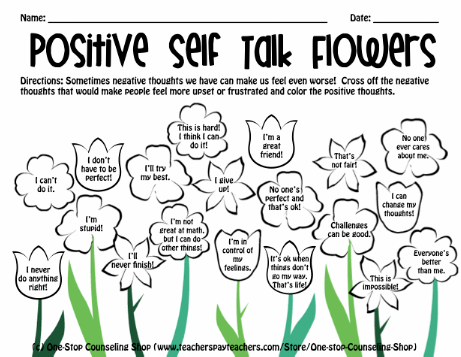
Self-talk is defined by self-talk psychologist James Hardy: “Dialogue through which a person interprets his feelings and ideas, regulates and changes value judgments and beliefs, gives himself instructions and encourages himself.” nine0003
Some psychologists believe that our "I" consists of two parts: one of them controls our mind and perception, and the other simply acts.
Self-talk can be a bridge between these two parts.
These conversations can be extremely helpful or harmful, depending on how you approach it. Everyone has these conversations in their own way, but here are three tricks that can turn them into a useful exercise.
You, not me
It matters whether you refer to yourself as "you" or as "I". It is better to refer to yourself using the pronoun not of the first, but of the second person, that is, to call yourself “you” and, moreover, by name. By changing how we refer to ourselves in this way, we can better regulate our behavior, thoughts, and feelings.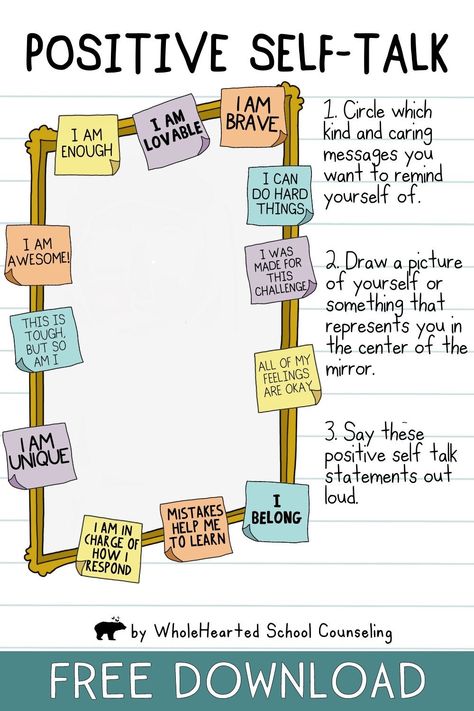
Saying “you” to ourselves or calling ourselves by name, we create the necessary psychological distance that allows us to talk about what is happening to us as if from the outside. It can also reduce stress in people with social anxiety and help you calm down when you're thinking about things after the fact. nine0003
Be gentle with yourself
Dialogue with yourself creates space for reflection, but it is not always good for us. The best option is to cheer yourself up. Trying to motivate yourself, for example, has been proven to help athletes maintain their energy levels and improve endurance.
Positive self-talk improves mood and emotionally supports us
Conversely, critical self-talk has been shown to lower self-esteem and increase the likelihood of repeating the same self-talk in the future. Psychologists say that a person is able to choose how to think, and this largely depends on how we talk to ourselves. Therefore, it is important for your well-being that you at least talk kindly to yourself. nine0003
Therefore, it is important for your well-being that you at least talk kindly to yourself. nine0003
Use in emergency situations
The inner voice helps us control our impulsive behavior. For example, when we say to ourselves: “Just go and do it!” or "Don't even look at that piece of cake!"
Participants were asked to press a button if they saw a certain symbol. At the same time, they had to repeat the same word all the time, which made internal dialogue impossible. In this case, they behaved much more impulsively and less controlled than in the other part of the experiment, where nothing prevented their inner voice from sounding. nine0003
Self-talk helps us when we learn something new
The key to success here is to keep our statements short, clear, and consistent. Psychologist Antonis Hatzigeorgiadis, who studies this issue, explains: “By talking to yourself, you stimulate and direct your actions, and then evaluate the results. ”
”
But perhaps the most valuable thing is that self-talk builds the self-control and motivation needed to succeed. If we tell ourselves that we can be successful, the chances of success are greatly increased. nine0003
Text: Alina Nikolskaya Photo source: Getty Images
New on the site
Why wives file for divorce more often than husbands: a psychotherapist's explanation
"Don't corrupt children!": 5 myths about sex education
do not listen: 3 common phrases — unexpected conclusions of scientists
“I “seize” dissatisfaction with myself, but because of this I hate myself even more”
How not to burn out before the New Year holidays: 3 tips - listen to them
Without exhaustion: how to prevent burnout
Are you a victim of FOMO? 6 Ways to Overcome the Fear of Missing Out
“Every time a relationship got serious, I left. Why?"
Positive Self Talk: Benefits and Methods
Contents
Many people are aware of an inner voice that provides a continuous monologue about their lives throughout the day.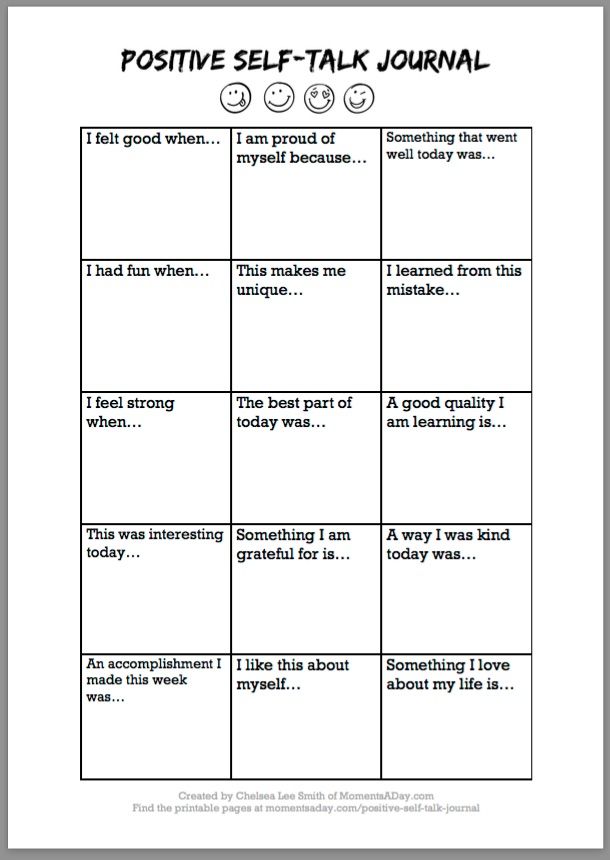 This inner voice or self-talk, combining conscious thoughts and unconscious beliefs and biases, gives the brain the ability to interpret and process everyday experiences. nine0003
This inner voice or self-talk, combining conscious thoughts and unconscious beliefs and biases, gives the brain the ability to interpret and process everyday experiences. nine0003
“I am the most powerful word. Because what you put after it shapes your reality.”
- Gary Hensel
Without even realizing it, your internal dialogue is running every second of every day. From menial tasks like meeting deadlines to making big life decisions, how you think and talk to yourself plays a huge role in how you live and feel.
If you are pessimistic, you will probably find that you are generally more stressed or even have a bad and low self-assessment . When you are more optimistic, you will experience feelings of hope, self-confidence, gratitude, and improved problem-solving skills.
What is self-talk?
So, what is "self-talk"? These are the messages that you have internalized in your subconscious that generate both positive and negative thoughts about yourself.
These thoughts then affect various aspects of your life, from your physical health and emotional well-being to the way you view yourself and others. nine0003
Do you practice negative self-talk?
To change your internal dialogue, you must first determine whether you are practicing positive or negative self-talk. If you can accept that this is the latter, then it's time to make small but effective changes.
Here are some examples of negative self-talk:
- Blame yourself when bad things happen.
- Focus on the negative in any situation with no positives to be found. nine0093
- Expect the worst outcome in any situation.
- Focus on what you can't do and see every aspect of life as good or bad, with nothing in between.
If you can relate to any of the above scenarios, then it is absolutely necessary to change the way you think, act and react to life. Here are some great ways and activities to get you started.
7 ways to turn a negative self-talk into a positive one? nine0017
Journal entries
Gratitude journal is the perfect place to start focusing on the positive things in your life and is so easy to implement.
You can start by looking for or creating written prompts for yourself, such as "What should I be smiling about today?" or “How have I changed for the better in the last five years?” and then write a simple paragraph or two in response to your prompt.
You not only reflect on your past achievements, but also focus on your strengths and positive qualities. nine0003
Removing negative people from your life
Of course, this is easier said than done, but it's true that we become what we think about and surround ourselves with.
If you find that there are one or more people in your life who add no value, constantly complain, and fill your day with negativity, it is in your best interest to either talk to them about their constant negativity or limit your time. You are wasting negative energy on them.
Stop comparing yourself to others
There will always be someone smarter, prettier, funnier and more talented than you when you compare yourself to others.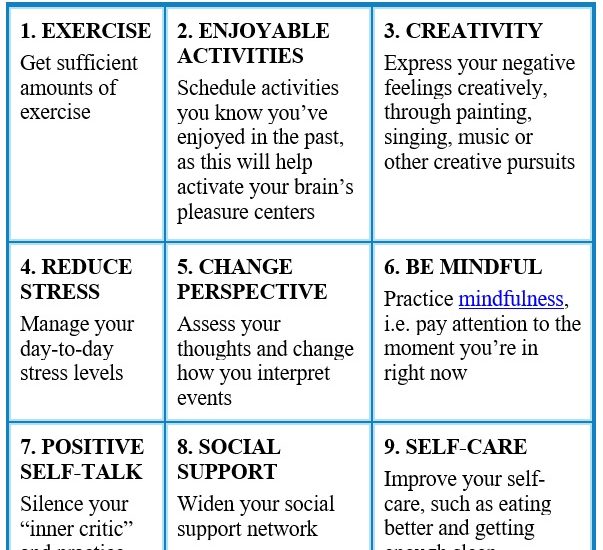 But that doesn't mean you don't have any of these qualities. Each person is gifted and beautiful in their own way - including you.
But that doesn't mean you don't have any of these qualities. Each person is gifted and beautiful in their own way - including you.
Practicing the Law of Attraction
The Law of Attraction is simple and effective, and it really affects us all the time. The Law of Attraction says that your thoughts and actions can determine your life.
And the different ways you can practice the Law of Attraction:
- Create a dream board with pictures and texts of the things you want in your life.
- Read/listen/speak what you want with conviction and faith.
- State daily with positive affirmations, such as: "I am a powerful person, happily living the life of my dreams with my partner and enjoying a successful career."
Meditate
Meditation is the time when a person closes himself off from the world and focuses only on himself. This is a great opportunity to relax the body and mind, which in turn will lead to a healthier self, both physically and emotionally.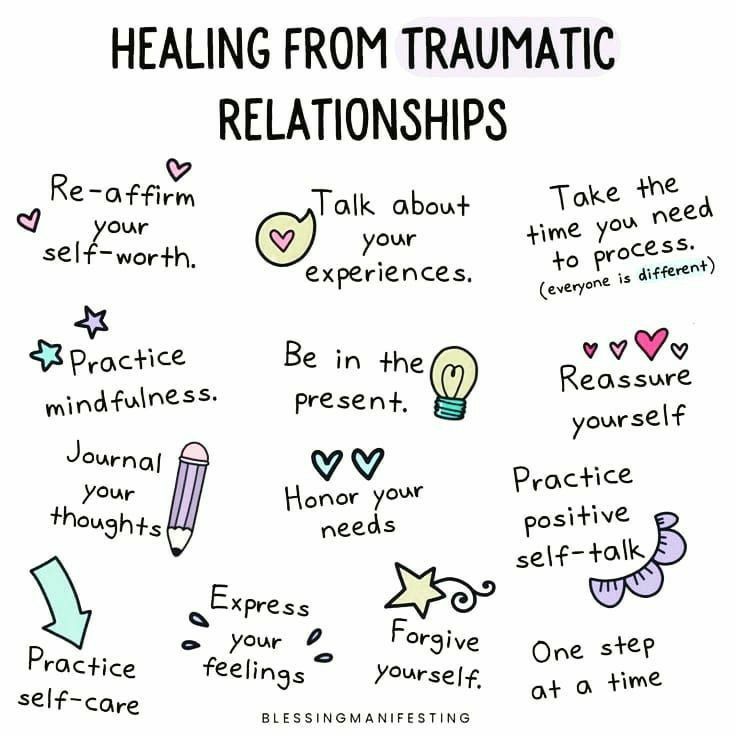 What's even better, Meditation is very easy to practice and can be done anywhere.
What's even better, Meditation is very easy to practice and can be done anywhere.
Just close your eyes, take a deep breath and hold your breath for 3 seconds. Then exhale all the air from your lungs. Do this exercise until you feel relaxed. When you reach a relaxed state, imagine the life you want for yourself. Where are you? Who are you with? What makes you so happy?
Set goals
Goals are very important when it comes to achieving your dreams. They can be arbitrarily large or small, but the main thing is to make them achievable. nine0003
Example: If you want to lose ten kilos, create smaller steps for yourself by making every kilo you lose an achieved goal. In this way, you will be able to celebrate your success more often and experience love for yourself. And that, in turn, helps you stay positive, focused, and correct.
And last but not least, laughter!
Laughing lowers stress hormones and boosts your immune system. It also releases feel-good endorphins, making us feel lighter, happier, healthier and less stressed.









